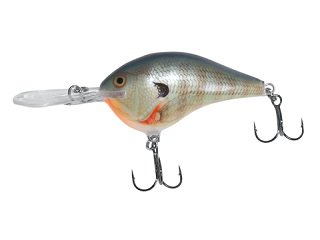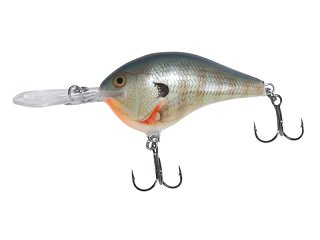 Crankbaits are one of the lures that every angler should keep in the tackle box. In fact, serious anglers should have an entire box devoted to cranbaits of all sizes, depths, and colors. Deep-running crankbaits can be quite useful on the water, as we discussed in Part One of this series, but it takes some tactic tweeking to use them to their fullest potential. Today, we finish this series on deep crankbaits with a few more tips on how to use them effectively.
Crankbaits are one of the lures that every angler should keep in the tackle box. In fact, serious anglers should have an entire box devoted to cranbaits of all sizes, depths, and colors. Deep-running crankbaits can be quite useful on the water, as we discussed in Part One of this series, but it takes some tactic tweeking to use them to their fullest potential. Today, we finish this series on deep crankbaits with a few more tips on how to use them effectively.
Your retrieval speed will be a big factor in getting your crankbait to reach its designated depth and stay there. I suggest using a medium-fast retrieve until the bait reaches its depth, then slow down to a medium retrieve. The water temperature and fish activity will ultimately determine which retrieval speed is best, though. You’ll want to use a slow speed when temperatures are cool and fish are less active, and a fast retrieve when it’s warmer and fish are moving around more.
Achieving your desired depth will also depend largely on how you position your fishing rod. The lower the position of the rod, the deeper a crankbait will run. The higher the rod tip, the shallower it will stay. Generally, when you throw deep crankbait, try to keep your rod tipped to a low angle, usually in the four or five o’clock range. Not only does this low angle help your crankbait reach its maximum depth, but it also helps with the slight delay in hook-set that is needed with crankbaits. When you feel anything out of the ordinary, such as pressure, slack line, or a sudden stop in the vibration, sweep the rod up or to the side. If it’s a fish, continue the sweeping motion. If not, then bring the rod immediately back down to its original position.
Your equipment will be crucial, as well, starting with the crankbaits you throw. It’s smart to keep a variety of depths, but also to use a crankbait in the range closest or deeper than the water you’ll be fishing. When it comes to the fishing rod you use, go with a 7’ rod with a soft flexible tip. This will delay the hook set just a little bit, which is what you want with a crankbait. Also, it will allow you to load up the rod on the cast and achieve maximum casting distance. The reel you go with will vary, depending on your preferences, but one with a middle-of-the-road gear ratio will give you the option to reel fast or slow. Spool your reel with line between 8 and 14-pound test and you’ll be in good shape.
As you can see, there are several factors that play a role in fishing with deep-running crankbaits. The tackle you use, along with how you use it, has a big impact on the effectiveness of your crankbait fishing. Hopefully, the tips outlined in this series will help prepare you for your own deep water crankbait fishing!








